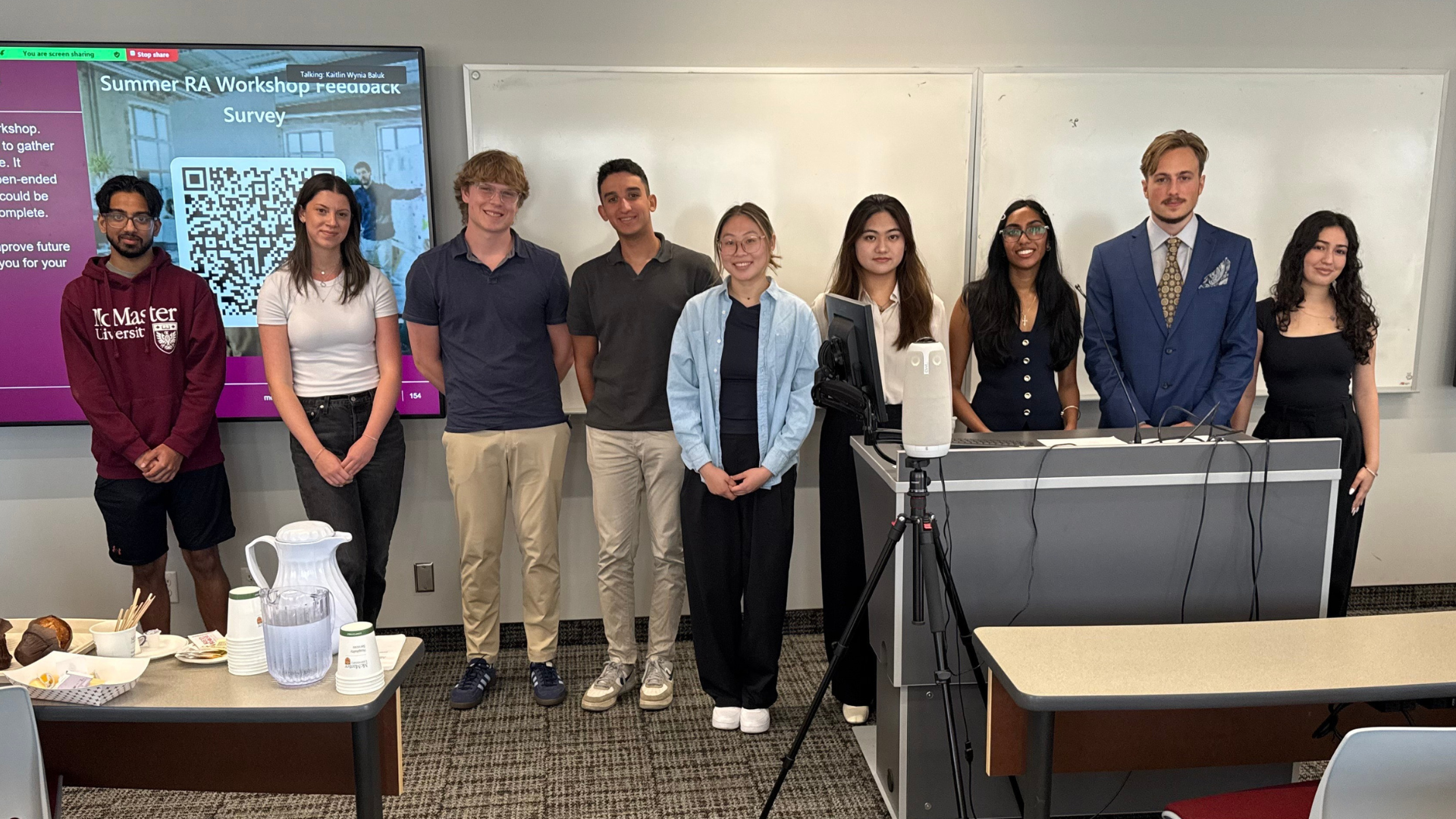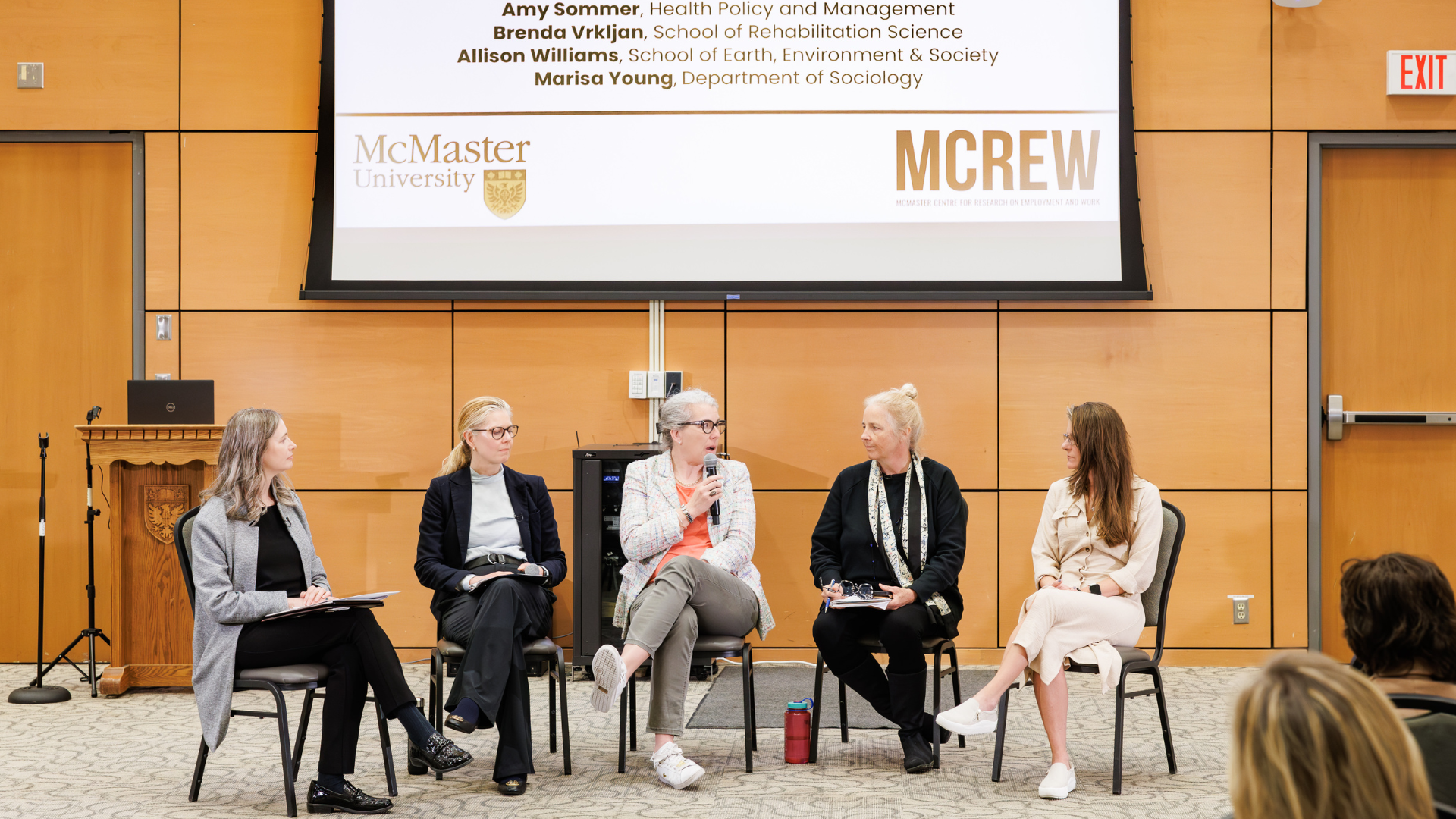HUMAN RESOURCES AND MANAGEMENT RESEARCH STAFF
Enduring Work: Experiences with Canada’s Temporary Foreign Worker Program
June 1, 2023 ·
Contributed by: Joanna Williams, Marketing and Communications Strategist

Over the past 10 years, Catherine Connelly, Professor, Human Resources & Management, and Research Chair of Organizational Behavior at the DeGroote School of Business, has researched the working relationships between temporary foreign workers and Canadian employees.
In her new book Enduring Work: Experiences with Canada’s Temporary Foreign Worker Program, Connelly draws on over one hundred interviews with people connected to different aspects of the program, analyzing their experiences from the perspective of organizational behaviour and human resources management.
We sat down with her to discuss the Temporary Foreign Worker program and her new book.
What is the Temporary Foreign Worker program?
The Temporary Foreign Worker program is an enormous program. If you look at last year alone, about 220,000 temporary foreign workers came to Canada – that’s more than the population of Prince Edward Island.
There are actually four mainstreams in the Temporary Foreign Worker program and their experiences tend to be quite different.
- Agricultural workers in the Seasonal Agricultural Worker Program (SAWP)
- In-home caregivers
- Low-wage workers
- High-wage workers
Does this program help to address labor shortages in the country?
There’s mixed evidence about that. Most agricultural businesses would not survive without these workers, they really depend on them. Hospitality, tourism, industrial butchers – it’s almost impossible to imagine these industries with zero temporary foreign workers.
Over the years, we saw an explosion in the number of low wage workers who came under the Temporary Foreign Worker program. This went from a fairly limited program to huge numbers, especially in restaurants and fast food.
People really started questioning, do we need to hire people from overseas to do these jobs? Are there not qualified Canadians? So, there’s quite a bit of a backlash against the expansion in this program that led to some restrictions in different regions – if the unemployment rate is a certain level, then you wouldn’t be allowed to hire these workers. And then we’ve had a steady state of high-wage workers coming under the Temporary Foreign Worker program and these are usually workers with fairly specialized skills.
It’s hard to think of a sector that does not have temporary foreign workers involved in it. Everything from web design to growing tomatoes to accountants to security guards. It’s a really broad program.
What are some of the issues or concerns these workers face?
Many temporary foreign workers who come are excellent workers. They have a lot of experience, really well trained and they’re often more than a little bit overqualified for the work that they’re doing. When they show up, maybe their job is you’re supposed to only do this, but actually they’re expected to do this and that and the other thing and you have to do it at night and I’m not going pay you for your overtime, or holiday pay or any of these extra things.
They’re often held to an impossible standard compared to their Canadian colleagues and it’s really not fair.
What would you say is the biggest challenge for participants in this program?
I’d say the biggest challenge for employers is how slow the program is. Everyone I spoke to said this is the slowest program you could ever imagine. And it was very difficult for them to use.
And then for the workers, the biggest thing is the closed work permits. I have had terrible jobs. Everybody I know has had at least a few terrible jobs. But you quit those jobs, right? Then you vote with your feet and then the employer learns that you have to treat people a little bit more fairly, or pay better. I think the easiest, quickest change would be to switch from closed work permits to open work permits.
What is a closed work permit?
A closed work permit ties the employee to that particular employer. To use the program, the employer has to submit a successful application for what’s known as an LMIA, a labour market impact assessment. It costs $1,000. It’s pages of paperwork and they have to show that no qualified Canadians will do this, and to create a plan for when the temporary foreign worker is done what will they do.
A temporary foreign worker can only work for them. If they don’t like it, they can’t just quit on the spot and work for the competitor across the street. Employers like it because it feels like a guaranteed worker, especially if they’re in a high turnover industry, like hospitality, tourism, restaurants, where people do quit all the time.
What is an open work permit?
An open work permit, that’s what people have in pretty much all of the other foreign worker programs in Canada. So for example, the International Mobility program usually it’s people with a university degree who are coming from a country that has a free trade agreement with Canada. They come and they work at this job and that’s great.
And if that job doesn’t work out, they can work somewhere else if they can find another job and then that’s it. It basically gives people the freedom to choose where they’re going to work.
Does the Temporary Foreign Worker program need to be cancelled, or can it be fixed?
When I first heard about the Temporary Foreign Worker program, I thought just cancel it. But there’s so many problems with it and there’s so many Canadians who need work.
So just cancel the program and it’ll sort itself out somehow. In looking back, I think that is a bit naive to think that would work just because so many businesses rely on these workers.
I think all the tinkering they’ve been doing with the program has not really solved much of the underlying issues with the program. But if they made some more fundamental changes, then I think the program could be salvaged. And I think in essence, it would be making the Temporary Foreign Worker program more like the International Mobility program, giving employees the same rights that the other workers have.
You have a new book called Enduring Work – can you tell us a little bit about the significance of the phrase ‘Enduring Work’?
The book is named Enduring Work for two reasons.
On one hand, it’s to emphasize that this work is enduring. The work is not temporary. Many of these so-called temporary workers, they have come to Canada for several years. It’s not a very short one-off work like this is, and when a temporary foreign worker leaves, they are often replaced by another temporary foreign worker.
So the work is just enduring, but I also wanted to emphasize that the workers themselves, they endure a lot and that the mistreatment that they endure, is significant and cannot be minimized. I think we need to keep their experiences in mind when we think about how we’re going to manage the program in the future.
Learn more in this infographic: Can the Temporary Foreign Worker program be saved?















